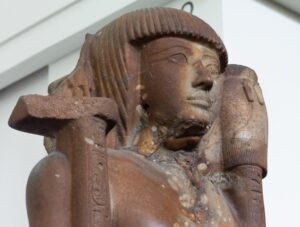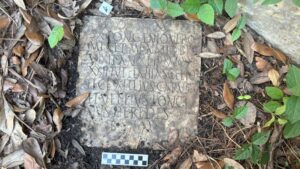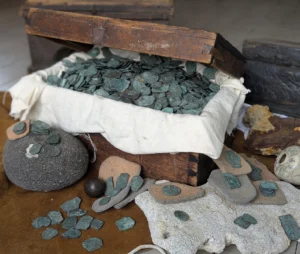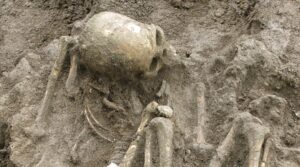The Te’omim Cave sits on the western edge of the Jerusalem hills. Within it archaeologists have found 120 oil lamps, three skulls, and a number of weapons, coins, and pottery shards. The lamps and skulls intrigued them.
The cave has always been associated with magic and rituals. In the 1900s, it was called “The Cave of the Mother of Twins” and the water in its rock pools supposedly had healing powers. Now some new discoveries suggest that between the second and fourth centuries AD, the cave served as a “portal to the underworld.”

Exploring the caves. Photo: B. Zissu/Te’omim Cave Archaeological Project
The flickering lamps held spirit messages
The oil lamps date back to the late Roman and early Byzantine periods. They were unusually positioned within the caves, tucked deep into crevices, where they would give off very little light. Researchers wondered what else they might have been used for. The lamps sit near the skulls, but no other bones are present in the caves.
Earlier studies suggested that the cave was a place to worship a god of the underworld. This, alongside the lamps and skulls, led to the idea of necromancy in the caves. In necromancy, the dead predict the future for the benefit of the living.
The team combed through ancient records for any reference to such practices. Skulls occur in very few Roman rituals, mainly in necromancy and sorcery. Cuneiform tablets from the time noted that skulls could summon ghosts during ceremonies.
Similarly, ancient Greek sources speak of necromancy using skulls. The lamps had a purpose other than providing light: The movement of the flames communicated messages from spirits and interpreted their meaning.

Oil lamps from the cave. Photo: B. Zissu/Te’omim Cave Archaeological Project
The nekyomanteion
It seems that witches usually carried out these rituals in tombs and other well-hidden locations. Sometimes these rites took place in a nekyomanteion (or nekromanteion) –- an oracle of the dead. These shrines generally lay in caves or next to water sources, explained the authors of the study.
The scattering of weapons in the caves also supports the presence of necromancy. At the time, people believed that metals like bronze and iron could protect you from spirits. Owners used daggers and swords to ensure that only the correct spirit took the offerings.

Extricating an oil lamp from a crevice between boulders. Photo: B. Zissu/Te’omim Cave Archaeological Project
A discreet place for illicit practices
The Roman Empire banned necromancy or “death magic,” so practitioners carried it out away from prying eyes. The cave was a perfect place.
“It’s a bit remote, but not so far from the main road. It’s deep, but not very deep. And it has a deep shaft at the end that they regarded as a connection to the underworld,” said the authors.
Archaeologists have studied the cave for decades, and in 1970, they found hidden pathways to previously unknown chambers. As part of the new study, a research team explored the caves between 2010 and 2016. It was during this time that they found the many oil lamps, weapons, and human skulls within the cave’s deep crevices.






